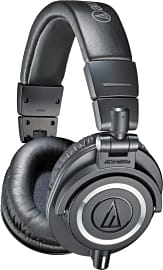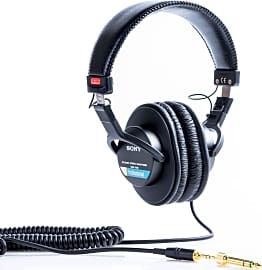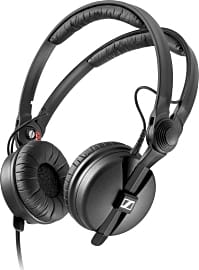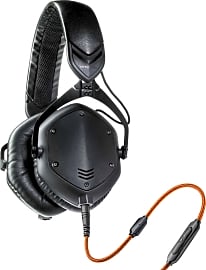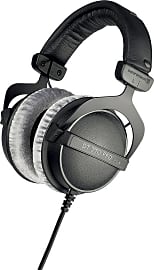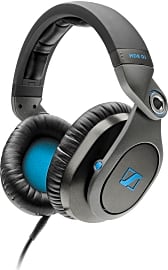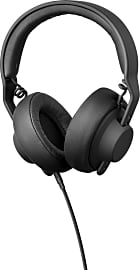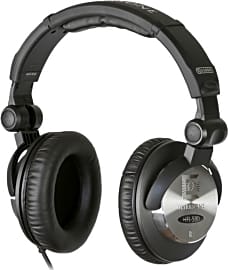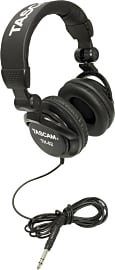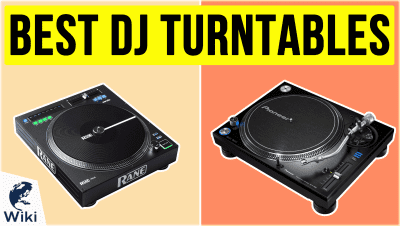The 10 Best DJ Headphones

This wiki has been updated 41 times since it was first published in May of 2015. A good pair of headphones is indispensable for anyone who's writing, mastering, and playing music live. Here are some of the best pairs for DJs, which we have ranked by audio fidelity, durability, and noise isolation to help you find the right option for your needs. We've included models at a variety of price points to meet any budget. When users buy our independently chosen editorial recommendations, we may earn commissions to help fund the Wiki.
Editor's Notes
June 11, 2019:
Finding a pair of headphones to DJ with is a very different world from finding a good set to wear around town or at home while enjoying some tunes. These models all offer a relatively neutral sound profile, which is of prime importance, because when you're cuing up tracks you need to hear kick drums, toms, and snares with the utmost in clarity. Now, that's not to say that there aren't cans great for both performing and relaxing. Sennheiser's HD25s are no stranger to the stage and also make great everyday listeners. And while they're pretty costly, the Beyerdynamic 770s are actually some of the best-sounding headphones overall, and would make a wonderful daily driver, even for very discerning listeners.
If you want, you can go a very expensive route with some TMA-2s, V-Moda M-100s, or Ultrasones; in fact, a whole lot of big-name DJs can be seen wearing the V-Modas on stage. You don't need to spend quite that much if you want top-of-the-line performance though. For a little less, the Audio-Technica M50x are the subject of an incredible amount of praise, from wedding DJs all the way to underground producers. Even less expensive are the Sony MDR7506s. But for durability, comfort, reliability, and overall resolution, its awfully hard to top the Sennheiser HD280Pro. According to some of the most prolific performers and audio professionals on the West coast, they are arguably the best there is.
Special Honors
Double Zero Have you heard of Zedd? If not, you should go listen to some of his tracks, but give yourself room to dance while you do. Afterward, check out the headphones that he worked closely with Japanese audio experts to design. They're a little expensive, but they look great and sound even better. double-zero.com
Sol Republic Tracks HD2 They're both flashier and smaller than what you'll likely see sound engineers using in the control booth, but the Tracks HD2 are an especially worthy contender if you want to look really, really cool while DJing in front of a crowd. After all, Skrillex and Steve Aoki can't both be wrong. solrepublic.com
Are DJ Headphones Really Any Different Than Standard Headphones?
An alternating current is passed through a cable and into the voice coil, which then generates a magnetic field.
Many people often wonder if there is any true difference between a regular pair of headphones one might purchase to listen to tunes on their phone and the kinds that are worn by DJs when performing on stage. Is it just marketing hype or are there really significant differences under the hood, or perhaps we should say under the cans? Well, it is a little bit of both, actually. DJ headphones do function just like any old pair of headphones, or earbuds for that matter, but they do also have additional features that make them perfectly suited to live performances in loud club and concert environments.
Inside every pair of headphones you will find a small loudspeaker that looks much like a woofer found in a standard set of home or car speakers. Inside of the loudspeaker there is a clear diaphragm or cone, usually with minuscule holes to allow sound and air to move through it, a voice coil, and a permanent magnet. An alternating current is passed through a cable and into the voice coil, which then generates a magnetic field. This magnetic field is repelled by and attracted to the permanent magnet causing anywhere from 20 to 20,000 small movements a second based on the amount of current the voice coil is being exposed to. These small movements change the air pressure around the diaphragm creating audible sound waves. This is the process by which every pair of headphones, from the cheapest $5 pair of knock off earbuds up to a $2,000 pair crafted specifically for the most diehard audiophiles, creates music.
Headphones purposely built for DJing will usually have a closed-back design. This improves their noise isolation capabilities, making them better suited to use in loud club settings. If a DJ were to use open-backed headphones, more of the external sound would bleed in and make it harder to hear the music being cued. A high level of noise isolation also allows a DJ to listen to music in their headphones at a lower volume level while mixing tunes, since they won't have to compete as heavily with external sounds. This can reduce the chances of experiencing hearing loss later in life.
Swiveling cans are another feature commonly found in DJ headphones. This permits a DJ to remove the earcup from one ear while leaving the other earcup firmly sealed against their head. This is known as single-sided monitoring. DJs do it when they need to monitor the sound coming out of the live speakers while also cuing up their next track. Some DJ headphones have cups that swivel a full 180 degrees, allowing them to lie flat against the chest when the band is resting on the neck. This can be especially convenient for DJs who often spend time speaking through a microphone as there is less chance of the cans muffling their voice or knocking against the mic. Models can be found with either one or two swiveling earcups.
Finding The Right Pair Of DJ Headphones
Now that we have a firm understanding of what makes a pair of headphones DJ headphones, what should one look for when choosing the best pair for their needs? In attempt at brevity, we will skip past the most obvious requirement, good sound, and move on to often overlooked features, comfort and style.
Ideally one should look for a pair of headphones that are made from either an aluminum or magnesium alloy.
The average DJ set runs anywhere from 60 to 120 minutes, and resident club DJs can often be found playing 4 to 5 hour sets, or longer. That is just on performance nights. There are countless hours spent practicing and tweaking a set for the live gig. Considering the amount of time that DJ headphones will be affixed to your head, it is important to get a pair that offers the utmost comfort. This will often be determined by the weight, bulkiness of the cans, band style and padding, as well as how plush the earmuffs are and the material they are made from. The lighter a pair of headphones are, the less strain they will place on your neck, but you can't just buy the lightest model possible without regard to other factors, such as build quality and material. Ideally one should look for a pair of headphones that are made from either an aluminum or magnesium alloy. These alloys are both lightweight and sturdy enough to withstand regular use, as well as being tossed into a bag for travel to and from gigs.
Earmuffs made out of a natural material, such as leather, will often be cooler and more comfortable to wear for extended periods of time. They will also be on the higher end of the price spectrum, though. If you cannot afford a model with natural leather, at least look for one with very plush earmuffs made out of some type of breathable material. The amount of padding on the headband can also make a big difference in comfort, as well as how adjustable it is. The more adjustment a band allows, the better you will be able to fit it to your head size.
Style might not be the first thing people consider when picking out their next pair of DJ headphones, and if all you do is practice in your house, it shouldn't be. On the other hand, if you will be performing live on stage with hundreds or thousands of people watching you, you might want to look good while you are up there. Models can be found in a range of colors, with cool logos or graphics, and in some very unique designs to help you stand apart from the crowd.
A DJ In The Navy?
The first patent given for headphones was awarded to Ernest Mercadier, a French Engineer, in 1891. They had an in-ear design and were created for telephone operators. Impressively, they even had basic noise isolation properties to block out the voices of other operators in the room.
They had an in-ear design and were created for telephone operators.
The next stage in the evolution of headphones happened in 1910, when Nathaniel Baldwin began producing sets by hand in his home and selling them to the American military, specifically the Navy. This follows a common theme in history where great strides in innovation were made with the military in mind. Unfortunately, both the sets invented in the 1890s and those intended for the navy had minimal padding, were uncomfortable to wear for long periods, and some even shocked the users when they tried to adjust them.
The first headphones developed for stereo use came about in 1958, when jazz musician John. C. Koss collaborated with engineer Martin Lange Jr. to create a portable phonograph that had attached speakers and a privacy switch to allow for single-person listening. Along with the phonograph, they released the SP/3, the world's first stereophone. The invention of the Walkman in the late 1970s and its explosion in popularity throughout the '80s and '90s is what truly helped make headphones a common household item.
Since that time, the development of headphones has gone through various stages, at times with a focus on becoming smaller, lighter, and more portable, while at other times with a focus on enhanced sound quality and higher volume capabilities. There is now a pair of headphones on the market to meet every consumer demand, from compact sports earbuds perfect for running on the treadmill or even waterproof models that can be used while swimming, to high end pairs designed for audiophiles and DJs.


